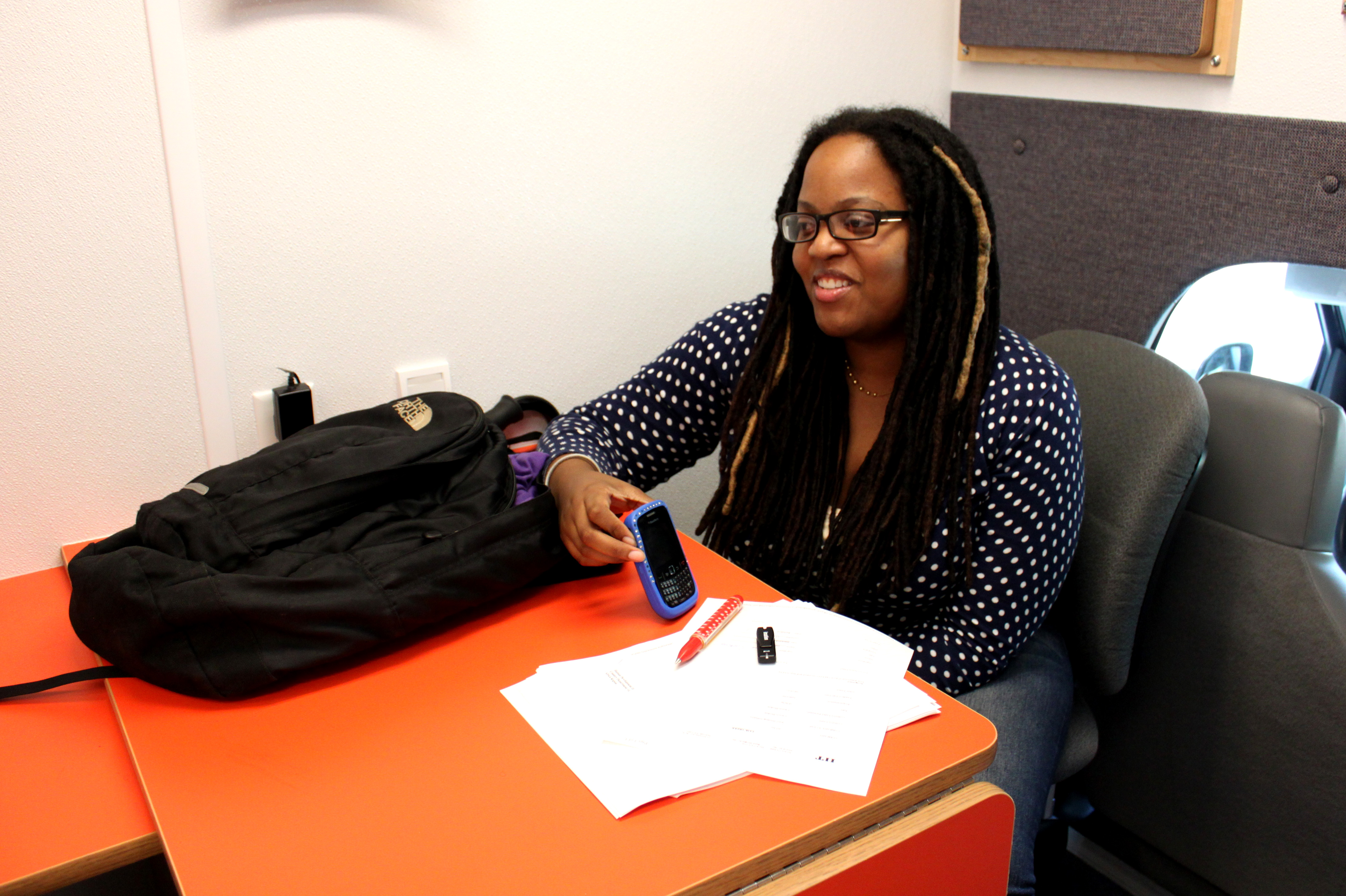 A black van marked “Going Digital” in bold orange letters parked conspicuously in front of the James Monroe housing project in Soundview one October morning.
A black van marked “Going Digital” in bold orange letters parked conspicuously in front of the James Monroe housing project in Soundview one October morning.
The rare passerby who dared to knock on the door discovered a computer lab on wheels inside, with eight new laptops, broadband access, printers, and instructors at the ready to teach digital literacy.
This van and one other like it are part of a pilot project launched by the Housing Authority in February to help bring digital access to low-income New Yorkers. The truck drivers travel to different neighborhoods in New York, including nine housing projects in the Bronx, offering free Wi-Fi and computer use from 10 a.m. until 4 p.m. The federal Broadband Technology Opportunities grant funds one van, while the city’s Housing Authority supports the other one.
The service is meant to help close the digital divide that is felt hard in low-income neighborhoods. “Let’s say people need to fill out food stamps or fill out an application for social security or for a job,” said Carmen Medina, 27, a digital van instructor who visits Castle Hill and Soundview in the Bronx. “And let’s say they don’t have the Internet, they don’t have a computer. To eliminate that despair, we have provided them with this.”
So far, use of the vans is hit or miss. Some days as many as a dozen people make use of the service, while other days no one comes knocking.
The “kind-of slow” days may be due to lack of publicity, said Anthony Gonzalez, assistant instructor and digital van driver.
Officials in the Housing Authority believe another factor might be at play. “If people believed in the value of the Internet, they would be on it already,” said Atti Riazi, chief technology advisor for the New York City Housing Authority. “So we are salespeople as well, teaching them the value of the Internet.”
img_7183_edited
A 2011 U.S. Department of Commerce report shows a significant income gap between those who are connected with broadband at home, and those who are not. About 43 percent of people who earn between $15,000 and $25,000 have Internet connections at home. The figure is 75 percent for those who earn between $50,000 and $75,000.
The average family income in New York public housing is $22,824. Around 60 percent of homes in public housing developments are connected, Riazi said. Although people often access Internet through mobile devices, it’s no substitute for the kind of productive work the Housing Authority hopes to help people do.
The idea is to help with job searches and research. But Medina said Facebook and games tend to dominate Internet use among the people who frequent the van.
Projects to bring “drive-by Wi-Fi” exist in some developing countries like India, but Diane Chehab, an information technology specialist who works for New York Housing Authority, said this mobile Wi-Fi program is the only one she knows of in the United States. The program is not expensive, she said, but funding is a concern — the grant from the Broadband Technology Opportunities program lasts through 2013.
Chehab said around 700 people have frequented the mobile computer labs since the program’s inception in February. The first van is busier than the second one, which was added to the program in June. Officials expect more patrons with time.
Until then, the Housing Authority is considering putting flyers advertising the vans directly in residents’ rent invoices to increase their use.
On Sept. 17, a group of four children — a 10-year-old, two 11-year-olds and a 14-year- old — visited the van at its station in front of Castle Hill Houses. They spent an hour and a half playing games on Facebook and watching anime and parodies of the “Gangnam Style” Korean music video online.
But earlier in the morning, two adults visited the van.
“They were in their 40s, and they wanted to learn how to sign up for an email account,” Medina said. “So I helped them set up their first emails.”

